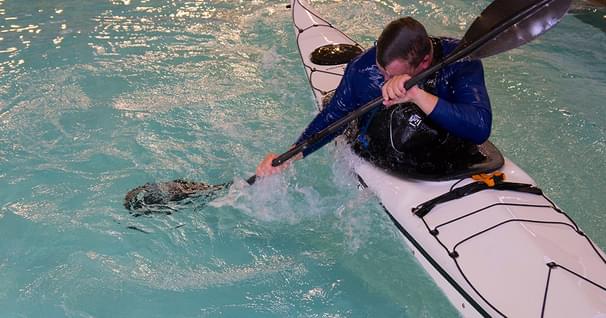Basic SUP Safety
Stand up paddling is a remarkable safe activity, but because we're on the water, it's important to understand that, when things go wrong, they can go wrong very fast. That's why it's important that you assume a conservative and safety-conscious attitude when making decisions on the water, or even before you hit the water.
One of the easiest ways to stay safe is to choose an appropriate paddling location. When you're picking your location for stand up paddle boarding, you'll want to think about the four W's: wind, waves, water, and weather. If you're a beginner or novice paddler, you're going to definitely want to pick a location that's sheltered from both wind and waves. Otherwise, the ideal SUP environment for beginners and novice paddlers has warm water, good access for launching, lots of places to get out on shore, and minimal motorized traffic.
If you're going to be dealing with cold water, cold air, or both, you're definitely going to want to dress up appropriately for the conditions. That's something we discussed in the earlier segment on gearing up for stand up paddle boarding.
As for safety equipment, it's important to know that stand up paddle boards are considered a vessel by the US Coast Guard. This means that you need to have a life jacket and whistle on hand if you're outside a swimming or surfing area.
If you're not a strong swimmer, you'll definitely want to consider wearing a life jacket while you're out stand up paddle boarding. There's a lot of great ones on the market, designed specifically for paddling. If you're a strong swimmer, you consider an inflatable PFD, like the one I'm wearing here. These are great because they're low profile and they can be out of the way, but they're ready in case you need them.
A leash is another key piece safety equipment because it connects you to your board with an ankle strap, so that you can't get separated from your board. Leashes are pretty much mandatory if you're in the surf zone or if you're out in the open ocean paddling. But we also recommend them for flat water paddling, because you never know when the wind's going to come up. In the event that you fall off your board, it's really easy for the wind to push your board away from you, and then you're in a really tough situation.
As you become a more confident and capable stand up paddle boarder, you might find yourself wanting to take your paddling to more exposed water. Although there's nothing wrong with doing this, it's important to understand the dangers and risks involved with paddling further from shore than you can confidently swim or in water that's exposed to wind and waves.
First off, weather should be your primary concern, and wind, lightning, fog, and quickly changing temperatures are some of the primary hazards. Generally speaking, paddling in strong winds is no fun, and so if windy conditions are forecasted, stick to sheltered water. Lightning is a concern because when you're out on the water, you're the highest point around. Fog is a concern because if you get far from shore, you can lose your bearings. So if you're out in foggy conditions, make sure to stay close to shore.
The next biggest hazard for open water paddlers is motorized boat traffic. As a general rule, if a boat is bigger and faster than you, it has the right of way. This doesn't represent the actual rules of the road for boat traffic. It's just common sense. Having said that, small water crafts are really the biggest hazards out there. Boats like sail boats, jet skis, and ski boats are unpredictable in the water. In the end, with a little common sense, it's easy to stay safe on the water.
Of course, if you're taking your stand up paddle boarding into rougher conditions, like the surf zone or white water, there's going to be a whole other set of issues to address.
Related Articles
As the days get shorter and the weather gets colder, it becomes harder to get out and paddle and easier…
Mention “pool session” and the first image that pops into most kayakers minds is a class in how to roll.…
Paddling alone is a recipe for danger. Bring a buddy and stay safe on the water.



